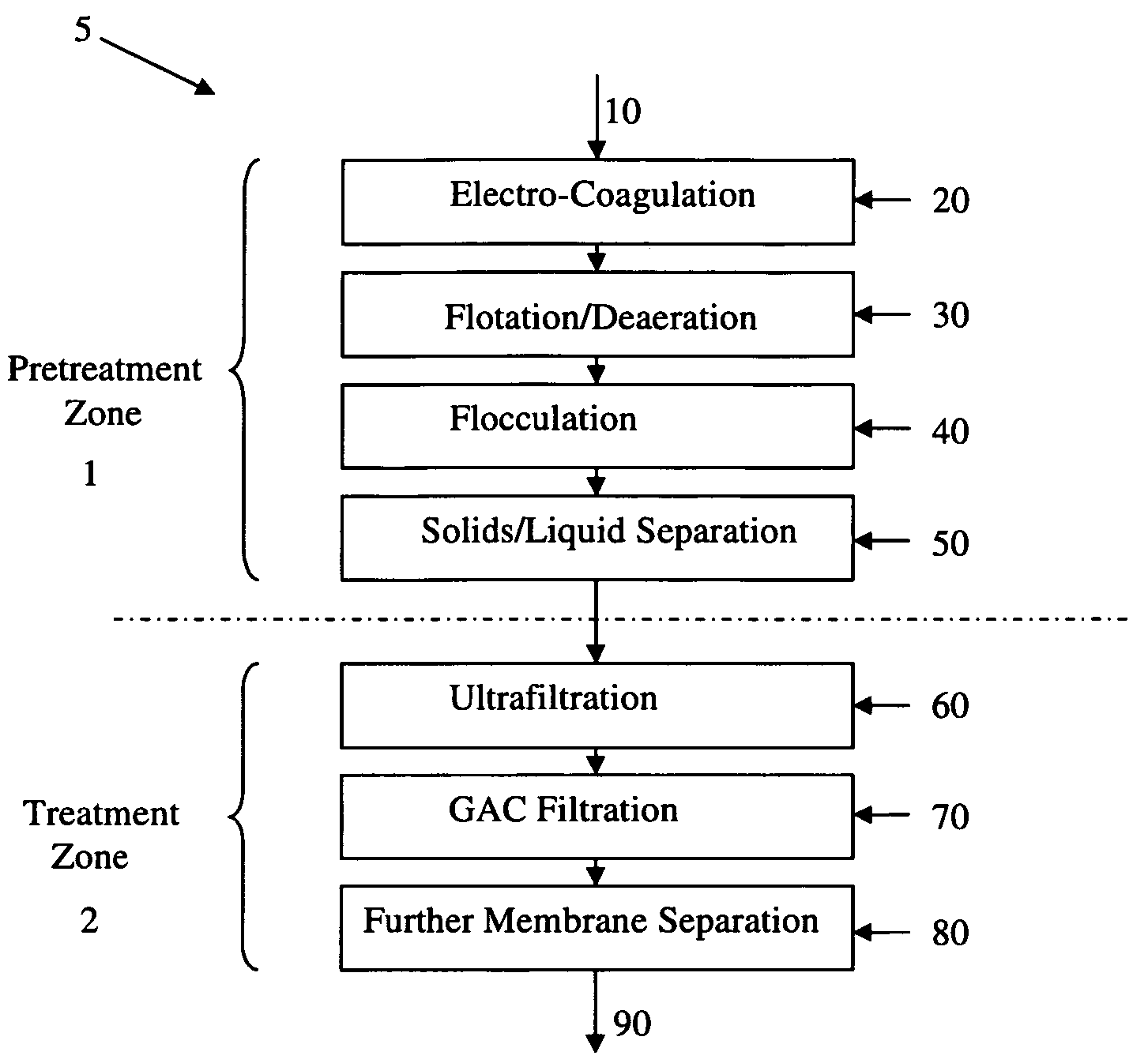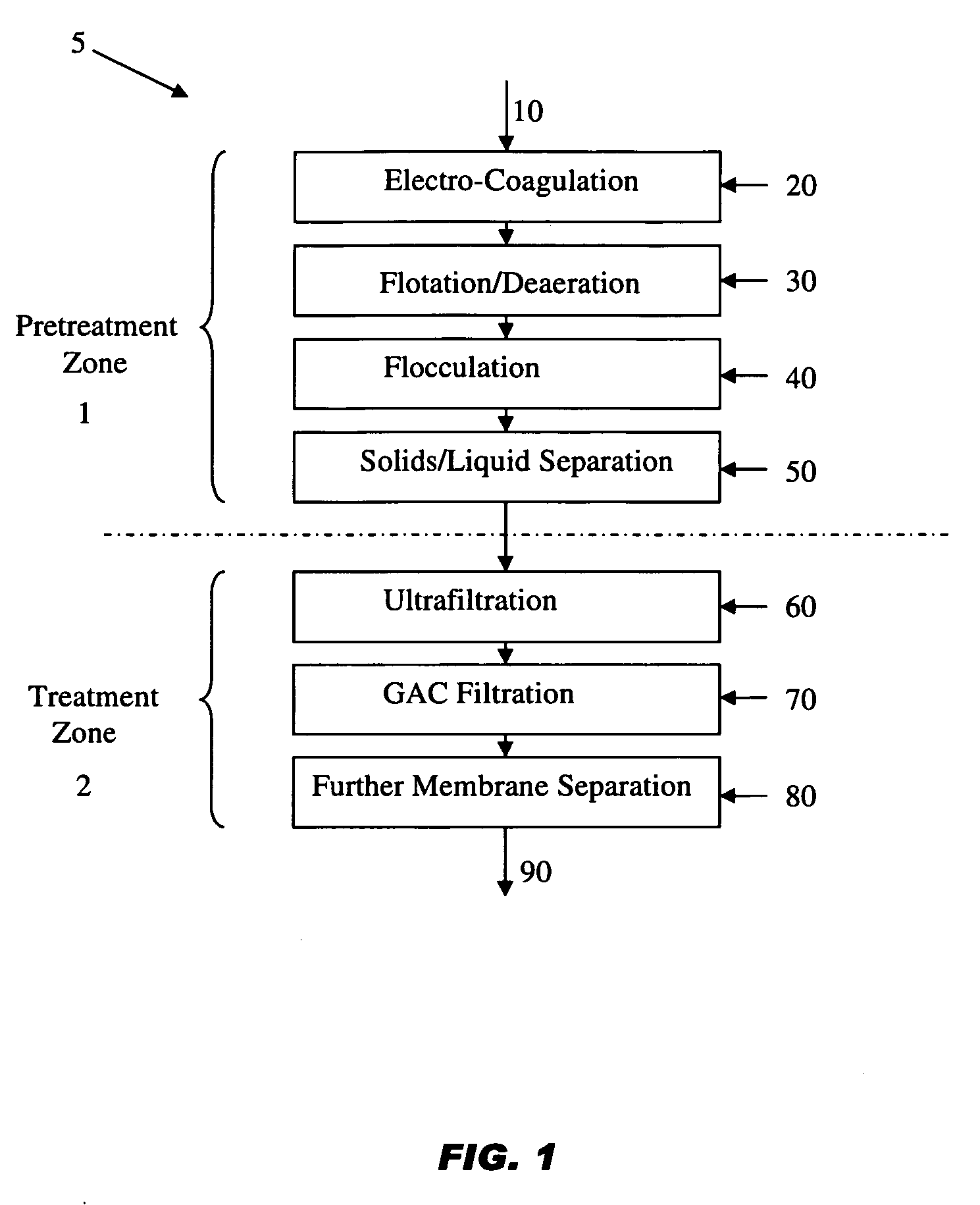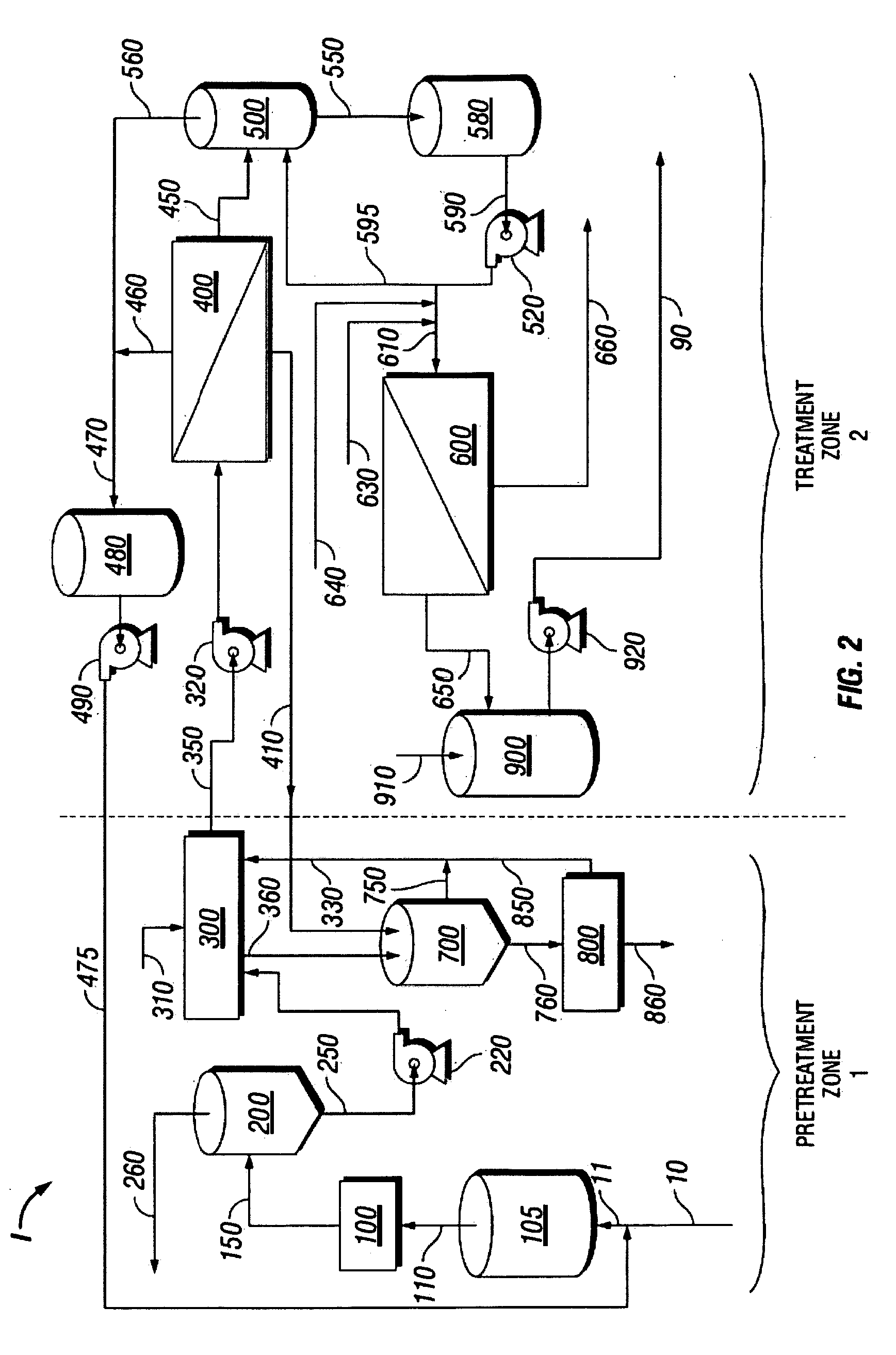Treatment process and system for wastewater, process waters, and produced waters applications
- Summary
- Abstract
- Description
- Claims
- Application Information
AI Technical Summary
Benefits of technology
Problems solved by technology
Method used
Image
Examples
example 1
Example 1
20 GPM Feed Water Treatment Pilot Plant
[0096]A water treatment system in accordance with the present disclosure was designed with a 20 GPM feed produced water stream 10. Description of the water treatment pilot plant II will now be made with reference to FIGS. 6, 7 and 8. Feed water stream 10 at 20-21 GPM and backwash recycle stream 475 at about 2 GPM enter strainer 105 via inlet feed stream 11. Strainer outlet stream 110 enters EC system 100. In this embodiment of EC system 100, the EC system comprises two electro-coagulation cells 101 and 102. EC system exit stream 150 at a flow rate of about 21.5 GPM is sent to CRV 200.
[0097]A more detailed flow diagram of CRV 200 operation, sludge handling and waste recycle of pretreatment zone 1 of the pilot plant is presented in FIG. 5. In this embodiment, CRV 200 comprises 20 gallon HDPE tank and impeller 205. Retention in CRV 200 is greater than 5 minutes to allow for deaeration, completion of coagulation, and flotation. CRV exit sl...
PUM
| Property | Measurement | Unit |
|---|---|---|
| Fraction | aaaaa | aaaaa |
| Percent by volume | aaaaa | aaaaa |
| Temperature | aaaaa | aaaaa |
Abstract
Description
Claims
Application Information
 Login to View More
Login to View More - R&D
- Intellectual Property
- Life Sciences
- Materials
- Tech Scout
- Unparalleled Data Quality
- Higher Quality Content
- 60% Fewer Hallucinations
Browse by: Latest US Patents, China's latest patents, Technical Efficacy Thesaurus, Application Domain, Technology Topic, Popular Technical Reports.
© 2025 PatSnap. All rights reserved.Legal|Privacy policy|Modern Slavery Act Transparency Statement|Sitemap|About US| Contact US: help@patsnap.com



